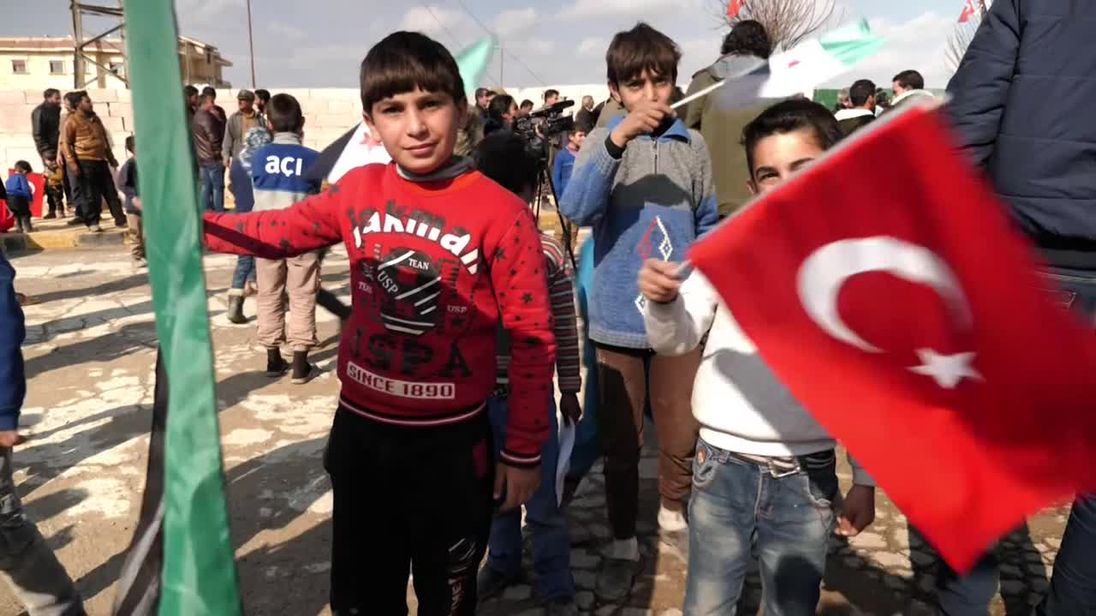A crowd of residents from the town of Souran in Aleppo province, some 13km (8m) from the Turkish border, were waiting when two buses of journalists and camera crews arrived on the government-organised trip.
Armed guards took up rooftop positions and soldiers ringed our group as we were led to an almost festival-type gathering of townsfolk.
Bunting made up of Turkish and Syrian rebel flags had been draped across the area and there were dozens of pictures of the Turkish leader hung around buildings.
"Afrin is free, free!" the crowd chanted. "PKK is out! Allah greets the free army."
This was in reference to the Syrian opposition fighters who have joined the Turkish-inspired Operation Olive Branch across the border.
Turkey, with the support of some Syrian rebels, has waged the campaign against Kurdish militants, whom Ankara regards as terrorists. The campaign has drawn protest from the US, which considers the Kurds an ally in the war on the Islamic State group.
As Turkish armed police looked on, one elderly man we spoke to told us how grateful he was to the Turks.
"No one in the world, no one on earth, has embraced the Syrian people like the Turks," he said. "They have done everything to help us."
The media group made up of dozens of journalists and camera crews was taken in armoured coaches by convoy onto Marine in Azaz province, on the edge of Afrin, which the Turkish operation is targeting.
Well into the second week of Operation Olive Branch our Turkish government escorts were anxious to show us the Burseya Mountain which troops captured a few days ago.
But there was great disappointment among the media group when we were only taken to a village several kilometres away from the mountain, which is considered a strategic vantage point.
The Turkish officials said the situation was still too insecure to take us any further.
Images we have been given from Syrian opposition fighters show the last moments of the battle with much shooting and running through fields as they made their way up the mountain.
The pictures show tunnels and troops moving in large numbers along deep trenches. This could explain why the mountain appears to have been harder to capture than the Turks will admit.
The pictures also show Syrian opposition forces capturing a number of Kurdish fighters.
One of the YPG combatants, which Turkey views as terrorists and linked to the Kurdish PKK fighting an insurgency in Turkey, has a bloody face and is slapped while the camera is rolling.
It is difficult to obtain accurate figures of prisoner numbers from either the Turkish authorities or their Syrian rebel allies, but the Kurds are already claiming a number of their captured fighters have been tortured and killed.
We were sent a video which appeared to show the body of one of the leading female Kurdish commanders. Her corpse is laying on the floor surrounded by unidentified fighters in combat fatigues.
Her arms are above her head, her shirt has been pulled up to her neck, her trousers pulled down and her breasts have been cut off, leaving deep, bloody wounds.
There must be considerable resentment building up within the YPG as images of their dead and captured fighters swamp social media platforms.
The YPG formed the backbone of the Syrian Democratic Force which the US backed, supported and armed during the action to oust IS from Syria.
But Turkey views the YPG as akin to the same Daesh terrorists. And Mr Erdogan has repeatedly vowed to push on until he has cleared his country's entire Syrian border of them.



